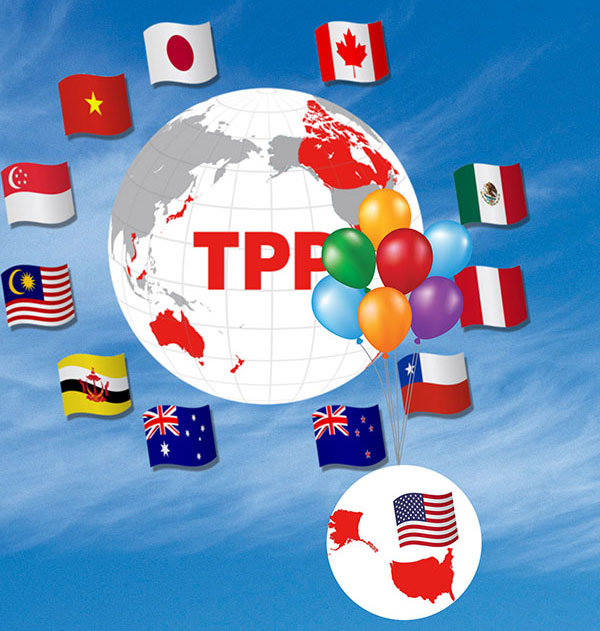Growth remains without TPP
 |
The demise of the Trans-Pacific Partnership (TPP) at the hands of US President Trump, though, will not be matched by a hit to Vietnam’s trade and investment boom.
First, TPP never came into force. Vietnam’s gains from the agreement were both hypothetical and prospective. The demise of TPP is considerably less consequential for the participants than, for example, rewriting the North American Free Trade Agreement (NAFTA) will be. While there is anecdotal evidence that manufacturers had been building capacity in Vietnam in anticipation of TPP – especially in the textile and garment sectors, which would have enjoyed tariff-free access to the US – it is also evident that many other factors have driven investment into one of Southeast Asia’s most dynamic economies.
Labour costs, rapid growth in the domestic consumer market, and a healthy network of existing trade agreements have all contributed to Vietnam’s reputation as a magnet for foreign direct investment (FDI), and the growth of domestic exporters. Membership of the ASEAN Economic Community and the Vietnam-EU Free Trade Agreement (EVFTA) are more than sidebars.
 |
Second, something will replace TPP. Positive statements from the prime ministers of Japan, Australia, and New Zealand all indicate a newfound willingness to reconstruct TPP without the US. These are trading nations, and the economic and social benefits of free trade to their citizens are self-evident. There is speculation that other countries – China, Indonesia, and Korea for example – will be invited to join TPP. Vietnam’s Asian partners are important to its success. Trade with countries such as Japan and Korea typically comes hand-in-hand with much needed FDI – a more elusive feature in US trading relationships. President Trump’s stated policy of negotiating bilateral trade agreements with TPP member states, Vietnam included, opens the door to the possibility of enhanced US market access in any case, although it remains to be seen just how attractive these “America first” trade agreements will be.
Third, Vietnam has made multiple statements since the US election that it will implement the domestic reform commitments it made in TPP regardless. Commitments included reforms to the state-owned enterprises (SOE) sector, government procurement, labour representation, intellectual property (IP) rights, e-commerce, and the digital economy. Vietnam did not sign up for TPP without considerable internal debate, and the proponents of these reforms most probably won their arguments before the agreement was signed in Auckland in February 2016. While external commitments have been a powerful influencer in keeping Vietnam’s domestic reform programmes on track, the government is committed, for genuine reasons, to pushing on with market liberalisation and other reforms. Apart from anything else, Vietnam recognises that reform is essential to maintaining its economic competitiveness.
And last, TPP was not a one-way street. US companies that were set to make significant gains under TPP have had those taken away. TPP would have eliminated Vietnamese tariffs on virtually all manufactured goods made in the US, and enhanced IP protection for American companies. This has animated US manufacturers in sectors such as automotive parts, industrial chemicals, information technology and communications, along with US agricultural producers. US exporters anticipated meeting Vietnam’s burgeoning infrastructure needs and selling into its growing industrial supply chains.
US companies have made a lot of progress in Vietnam in the absence of TPP, and this will continue, but some of this lost opportunity will be captured by manufacturers from China, Japan, Korea, other Southeast Asian countries, and the EU. It is also possible that we will see some import-substitution in Vietnam, with what might have been “Made in USA” being produced in Vietnam’s already booming industrial zones – which is good news for Vietnam’s manufacturing workers.
By Warrick Cleine - Chairman and CEO, KPMG in Vietnam and Cambodia
What the stars mean:
★ Poor ★ ★ Promising ★★★ Good ★★★★ Very good ★★★★★ Exceptional
Latest News
More News
- Education reforms aid dealmaking appeal (December 03, 2025 | 10:07)
- Manufacturing deals bring stronger supply chains closer (December 03, 2025 | 09:34)
- Vietnam to limit raw rare earth exports (December 02, 2025 | 17:08)
- Japanese embassy marks 20 years of Japan-ASEAN bond market support (December 02, 2025 | 16:57)
- Phu Tho accelerates digital transformation to drive business growth (December 02, 2025 | 16:20)
- Vietnam-Czech collaboration to expand in key areas (December 02, 2025 | 15:36)
- GG Industries to produce high-tech battery storage with Goldwind tech (December 02, 2025 | 10:08)
- Manufacturing growth holds steady despite storm disruptions (December 02, 2025 | 10:06)
- Fresh Del Monte Produce Inc. expands banana sourcing to Vietnam (December 01, 2025 | 08:00)
- AEON Vietnam breaks ground on My Tho Shopping Centre (November 30, 2025 | 09:00)

















 Mobile Version
Mobile Version